🐍 Weed Biology and Ecology
Important Weeds of different crops, Economic Losses due to Weeds, Importance of Weeds with Example, Multiplication and Dissemination
Weed Biology
- Weed biology is related to the study of weeds in relation to their geographical distribution, habitat, growth and population dynamics of weed species and communities.
- Knowledge of weed biology is of pivotal importance for weed management and control in agriculture.
- The efficient propagation and different dissemination potential are the sole reason for such spread.
Characteristics Features of Weeds
To develop appropriate weed control, the characteristic features of weeds have to be known.
Prolific Seed Production
One of the most pernicious habits of weeds is their vigorous reproduction. In general, annual weeds are characterized by the production of very large number of seeds. Seed production varies from 40 to 1,96,000 no. of seeds/plant.

Vegetative Reproduction
The vegetative reproduction is another way by which the weeds were able to spread. Some of the perennial weeds multiplied by various means like Tubers and Nuts (nut grass), and Root Stock (Bermuda grass & Johnson grass), Bulbs (wild onion and garlic), Roots (Canada thistle), Stems (dodder) and Offsets (aquatic weeds).
Seed Dormancy
- It is an efficient survival mechanism of weeds. It is defined as a state in which a
viableseedfails to germinateevenunder favorable conditionsfor plant growth. - Seeds of most of the weeds exhibit one or other type of dormancy like inherent/innate/natural dormancy or induced/secondary dormancy or enforced dormancy by wild mustard, black mustard and wild oats respectively.
Avena fatuaexhibit all the three kinds of dormancy.
Longevity and Viability of Seeds
- Lotus seed collected from the bottom of the Manchurian lakebed have viability even after 1000 years. Whereas wild mustard and Chenopodium remain viable for 30 and 20 years, respectively
Weed Seed Dispersal and Germination
- Weed dispersal has no geographical boundaries. Common agents of weed dispersal are wind, water, animals, birds, organic manures, agriculture implements and human beings.
- Mexican poppy (Argemon mexicana, weed) has Censer mechanism.
Wider Adaptability
They have ability to thrive under adverse conditions due to morphological and physiological conditions Eg Trianthema (Carpet Weed), Sorghum halepens and Saccharum spontaneum.
Modified structure in order to compete with crop plants
- They are provided with hooks, stiff hairs, thorns and spines Eg. Argemone, Xanthium, Tribulus, and Achyranthus spp.
Other characteristic features like
- Germination synchronization between weeds and crop plants. Flush of weeds germinates along with crop plants.
- Rapid establishment and growth of weed seedlings
- Tolerance to shading effects by the crops at the time of establishment
- Quick response to available soil moisture and nutrients.
- Relative immunity to post seeding soil disturbance practices
- Mimicry: Resembles the crop plants, morphological characters are similar to the crop plants.
- Resistance to herbicides in use thus weeds are called as
excellent competitors.
Weed Ecology
- “Interrelationship between weed plants and their environment”.
- Weed ecology is study of inter-relationship between weed and their environment. Weed ecology is thus concerned with growth characteristics and adoptions that enable to survive with changes in the environment.
Persistence of weeds
- Weeds are highly persistent.
- Persistence is an adaptive measure of a weed that enables it to grow in any environment. The persistence of an organism refers to repeatedly invade an environment even when it is apparently removed from the scene by man (or any other agent). This should be differentiated from its hardiness, which refers to its ability to withstand all kinds of natural stresses at a given place.
- Weeds are both
persistentandhardy. - Persistence of weeds results from their multifacet mechanisms such as
- Prolific seed production
- Viable seed production
- Dormancy
- Vegetative propagation
- Rapid dispersal
- Inherent hardiness
- Evasiveness
- Self-regeneration
- Selective invasion
- Weed succession
👉🏻 Persistence of weed is largely influenced by
- Climatic (1. Light, 2. Temperature, 3. Rainfall 4. Wind and 5. Humidity)
- Edaphic
- Biotic factors Which determine the distribution, prevalence, competing ability, behavior and survival of weeds.
Dormancy Mechanism of Weeds Seeds
- Innate dormancy – due to genetic factor (hard seed coat)
- Enforced dormancy – due to their presence in deeper (more than 5 cm) layer.
- Induced dormancy – due to imbalance of O2 and CO2, and water logging condition.
All type of dormancy mechanisms (Innate, Induced and Enforced) exist in
wild oat (Avena fatua).
Inherent Hardiness
Weed possess some kind of built-in mechanism to survive against the vagaries of nature like extreme cold, heat, drought, biotic stresses and soil abnormalities. Several weeds of tropical origin like Cyperus and Amaranthus spp. adopt C4 pathway of CO2 fixation, which is devoid of photorespiration. Weeds have high transpiration efficiency. Low rates nutrient requirements. Slow rate of translocation of food and nutrients. High rates of elongation in the initial stages of growth improve their competing ability and persistence.
Evasiveness
Many weeds are capable of evading destruction by animals and man because of their bitter taste, disagreeable odour, spiny nature and mimicry.
Self-Regeneration
Weeds are self-sown. They don’t require any artificial, friable seed bed for their germination.
Selective Invasion
- Weed species differ widely in their soil and climatic requirements. Available soil moisture, soil pH, temperature, photoperiod and solar energy determine the weed composition. For example in a dry farming situation, drought tolerant weeds like Tribulus terrestris, Argemone mexicana, Eragrostis, Euphorbia hirta and Celosia argentia. When such fields are brought under irrigation these weed spp. are replaced by better moisture responsive weeds like Trianthema monogyna, Phalaris minor, Commelina bengalensis. Further, if such fields – are turned into paddy another shift in weed flora, Echinocloa, Eclipta spp. Caesulia auxillaris dominate the scene.
Weed succession
- In nature weed spp. have chance to cross breed to variable levels leading to the development of a new plants with different genetic make-up, forming new races within a species. Such races of weeds are called
Agricultural Ecotypes. - Continuous herbicide usage to destroy the normal races of a weed spp. result in development of new ecotypes which may sometimes prove tolerant to herbicides used. Such agricultural ecotypes are then called
Chemotypes. - Weed succession can also occur among different weed spp. themselves in response to long term adoption of an agricultural practice, including use of herbicides. This lead to destruction of susceptible group leaving behind few plants of the resistant spp to gradually build up their population and emerge as dominant weed flora.
- In Punjab several years of herbicidal control (
Isoproturon) of Phalaris minor in wheat field lead to increase in Avena fatua population. - Likewise in Tamil Nadu Butachlor usage in rice controlled Echinocloa spp. efficiently but this lead to increase in Cyperus spp.
Sorghum halepenseandSaccharum spontaneumhaving majority of these factors and they are referred to ashorrible weeds.- Rotate the herbicides having different mode of action. Due to continuous application a minor weed become a major weed. This is called
weed shiftin response to weed control.
Crop-Weed Competition
- Weeds are the naturally grown plant which are able to extract nutrients & water from the soil and are competent enough to harvest light energy. In the growing plants, leaf area index (LAI) and root density increase which lead to mutual interference in the utilization of growth factors. The population of weeds crossing over the threshold level increases the competition for growth factors resulting in reduction of crop production. The weed and crop compete for such common growth factors whose availability is less. ln the normal cases the weed competes with the crop mainly for nutrients, water, light, place and CO2 but in some instances, weeds show the allelopathic effect on crops.
- The competition may be interspecific and or intraspecific.
- Crop weed competition effect is
always negative. - Highest yield reduction through weeds is found in
sugarbeet.
(i) For Nutrients
- It is an important aspect of crop weed competition. Weeds usually absorb mineral nutrients faster than crop plants. Usually, weeds accumulate relatively larger amounts of nutrients than crop plant Nutrient removal by weeds leads to huge loss of nutrients in each crop season, which is often twice that of crop plants.
- Amaranthus accumulate over 3 % nitrogen in their dry matter and this fall under category of nitrophylls.
(ii) For Water
- Crop weed competition becomes critical with increasing soil moisture stress. In general, for producing equal amount of dry matter weeds transpire more water than field crops.
- Therefore, the actual evapotranspiration from the weedy crop fields is much more than the evapotranspiration from a weed free crop field.
- Consumptive use of Chenopodium album is 550 mm as against 479 mm for wheat crop.
- Further it was noted that weeds remove moisture evenly from up to 90 cm soil depth. While the major uptake of moisture by wheat was limited to top 15 cm of soil depth.
(iii) For Light
- Competition for light (Solar energy) Plant height and vertical leaf area distribution are the important elements of crop weed competition. When moisture and nutrients in soil are plentiful, weeds have an edge over crop plants and grow taller. Competition for light occurs during early crop growth season if a dense weed growth smothers the crop seedlings. Crop plants suffer badly due to shading effect of weeds.
- Cotton, potato several vegetables and sugarcane are subjected to heavy weed growth during seedling stage. Unlike competition for nutrients and moisture once weeds shade a crop plant, increased light intensity cannot benefit it.
(iv) For CO2 (Space)
- Crop-weed competition for space is the requirement for CO2 and the competition may occur under extremely crowded plant community condition. A more efficient utilization of CO2 by C4 type weeds may contribute to their rapid growth over C3 type of crops.
Allelopathy or Teletoxy
- The term allelopathy was introduced by
Molisch(1937). Plants growing in the community produce and release numerous secondary metabolites, many of which are capable of initiating chemical warfare among the neighboring plants. - This phenomenon of one plant having a detrimental effect on another through the production and release of toxic chemicals has been termed ‘allelopathy’. These chemicals are called
allelo chemicals. - Parthenium daughter plants exhibiting teletoxy to its parent plants is known as
autotoxy. Allelopathic Chemicals– are largely derivatives of benzoic acids, cinnamic acids, phenolic acids, coumarins, hydroquinones, benzoquinones,- The word allelopathy is derived from Greek – allelo, meaning each other and patho, an expression of sufferance of disease.
- These chemicals inhibit the seed germination of small grains with Cyperus rotundus extracts. Growth of wheat plants by Avena fatua and Phalaris minor extracts. Reduction of germination of cabbage and eggplant by Amaranthus retroflexus. Inhibition of the growth of many agronomic plants by Parthenium spp extracts.
Allelopathic control of certain weeds using Botanicals
- For instance, Dry dodder powder has been found to inhibit the growth of water hyacinth and eventually kill the weed.
- Likewise, carrot grass powder found to detrimental to other aquatic weeds.
- The presence of marigold (Tagetes erecta) plants exerted adverse allelopathic effect on parthenium spp growth.
- The weed coffeesena (Cassia spp) show suppressive effect on parthenium.
- The eucalyptus tree leaf leachates have been shown to suppress the growth of nut sedge and bermuda grass.
Critical period of crop-weed competition
- The period at which maximum crop weed competition occurs called
critical period. It is the shortest time span in the ontogeny of crop when weeding results in highest economic returns. - In general, for most of the annual crops first
30-45 daysweed free period is very important.
Important Weeds of different crops
(A) Kharif Crops
- Paddy: Echinochloa spp., Cyperus spp., Wild Rice, Celosia sp., Eclipta, Cynodon sp.
- Maize, Sorghum, Bajra: Phyllanthus sp., Amaranthus sp., Johnson grass, Cynodon sp., Cyperus spp., Partulaca sp.
- Soybean, Moong, Urd, Arhar, Oat, Groundnut & Cotton: Phyllanthus sp., Solanum nigrum, Amaranthus sp., Johnson grass, Celosia sp., Kodo, Cynodon sp., Cyperus spp., Partulaca sp.,
(B) Rabi Crops
- Wheat and Barley: Chenopodium sp., Anagallis sp., Phalaris minor, Wild oat, Melilotus spp., Cynodon sp., Cyperus spp., Convolvulus sp., Vicia hirsute, Asphodelus sp. Fumaria parviflora, Anagallis sp., Chenopodium sp., Melilotus sp.
- Gram, Pea, Lentil, Potato, Mustard & Linseed: Fumaria parviflora, Anagallis sp., Chenopodium sp., Melilotus sp., Asphodelus sp., Cynodon sp., Cyperus spp., Convolvulus sp., Vicia hirsute, wild safflower, Cyperus spp., Argemone maxicana
- Berseem: Chicorium intybus, Cynodon, Anagallis, Cyperus spp.
- Tobacco: Orobanche sp., Melilotus sp., Convolvulus sp., Cynodon, Cyperus spp.
- Sugarcane: Most of kharif and rabi weeds
Economic Losses due to Weeds
- Economic impact of weed on the Indian economy is estimated about 2 decades ago ranged from Rs. 20 to 28 billion.
- Recent study suggested that nearly one third of oilseeds, half of the foodgrains and an equal amount of pulses produced currently are lost due to weeds.
- If proper weed management is adopted, an additional production of 103 MT of foodgrains, 15 MT of pulses, 10 MT of oilseeds and 52 MT of commercial crops per annum may be obtained.
- This amounts to an additional income of Rs. 1,05,036 crores per annum (DWSR 2007)
- This can increase the share of agriculture in India’s GDP by 15 per cent.
- At a conservative estimate, an amount of Rs.100 billion is spent on weed management annually in India.
Importance of Weeds with Example
Maintain soil fertility
👉🏻 Typha spp. (add 1-35 per cent nitrogen)

Control soil erosion
👉🏻 Cynodon dactylon, Convolvulus arvensis.
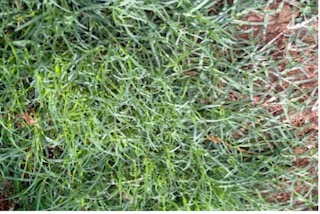
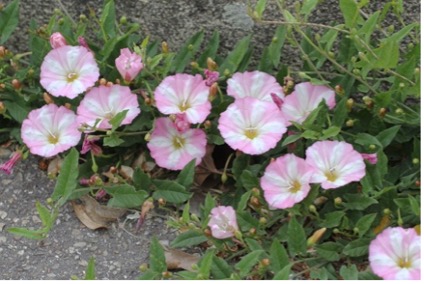
👉🏻 Agropyron repens is a soil binding grass.
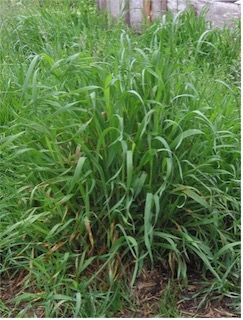
Used as fodder
👉🏻 Cichorium intybus, Cynodon spp.
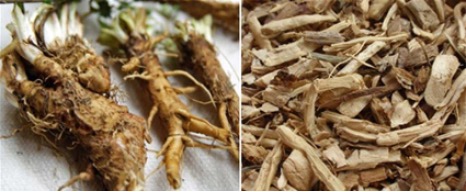
Have medicinal value
👉🏻 Leucas aspera is used in snake bite.
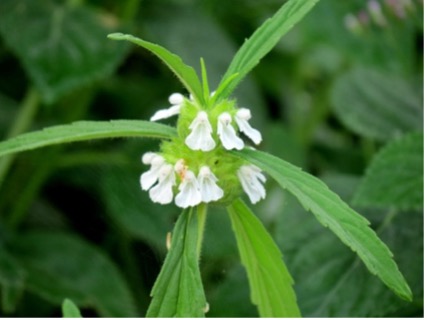
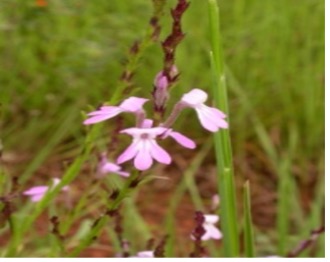
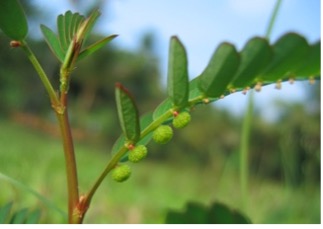

Have economic value
👉🏻 Roots of Cichorium intybus is used in adding flavour to coffee

👉🏻 Saccharum spontaneum is used in roof making
Maintain pH
👉🏻 Argemone maxicana is used for making alkaline soil to acidic
👉🏻 Rumex acetocella is used for making acidic soil to alkaline
Used as ornamental plants
👉🏻 Lantana camara, Eichhornia crassipes
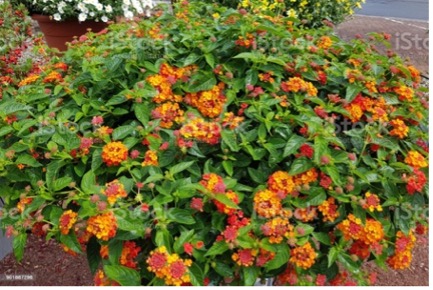
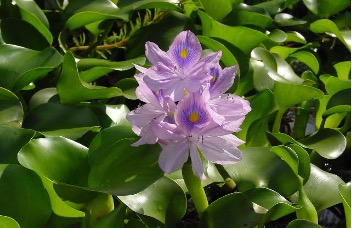
Used in cleaning water
👉🏻 Eichhornia crassipes
Adds organic matter to soil
👉🏻 Amaranthus viridis, Convolvulus arvensis
Used as Vegetables
👉🏻 Chenopodium album, Amaranthus viridis
Religious purpose
👉🏻 Cynodon spp.
Useful for cottage industries
👉🏻 Saccharum spontaneum, Typha spp.
Donating genes to crop plants
👉🏻 Crop Breeding: Saccharum spontaneum (used in sugarcane)
Used as nematicides
👉🏻 Crotolaria, Parthenium
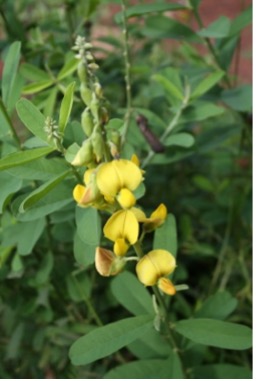
Used as pollution indicator
👉🏻 Brassica kaber (Wild mustard) to indicate NO2 pollution.
👉🏻 Stellaria redia (Chick weeds) to indicate SO2 pollution.
Multiplication and Dissemination
Weeds are prolife with high fecundity. It multiply profusely by—
- Bearing seed or
- Propagules or by
- Both
Weeds are disseminated by three ways
- Weed seeds either fall near the mother plant or
- Travel a long distance and short distance or
- Travel with agricultural crops.
Most of weeds travel by various agencies
- Structural modification like saccatie fruits, winged, parachute fruits, plumed fruits, hook or spiny appendages.
- Introduction from outside like Johnson grass (Sorghum halepense).
- Impurities in crop seeds and in feed stuff.
- Threshing and cultivating machines spread rhizomes.
- Manuring with partially decomposed FYM & compost.
- Wind e.g. Canada thistle seeds disseminate by wind.
- Water/irrigation.
- Animals e.g. xanthium.
- Human activities e.g. Phalaris minor.
Weed Biology
- Weed biology is related to the study of weeds in relation to their geographical distribution, habitat, growth and population dynamics of weed species and communities.
- Knowledge of weed biology is of pivotal importance for weed management and control in agriculture.
- The efficient propagation and different dissemination potential are the sole reason for such spread.
Characteristics Features of Weeds
To develop appropriate weed control, the characteristic features of weeds have to be known.
Prolific Seed Production
One of the most pernicious habits of weeds is their vigorous reproduction. In general, annual weeds are characterized by the production of very large number of seeds. Seed production varies from 40 to 1,96,000 no. of seeds/plant.

Vegetative Reproduction
The …
Become Successful With AgriDots
Learn the essential skills for getting a seat in the Exam with
🦄 You are a pro member!
Only use this page if purchasing a gift or enterprise account
Plan
- Unlimited access to PRO courses
- Quizzes with hand-picked meme prizes
- Invite to private Discord chat
- Free Sticker emailed
Lifetime
- All PRO-tier benefits
- Single payment, lifetime access
- 4,200 bonus xp points
- Next Level
T-shirt shipped worldwide

Yo! You just found a 20% discount using 👉 EASTEREGG

High-quality fitted cotton shirt produced by Next Level Apparel